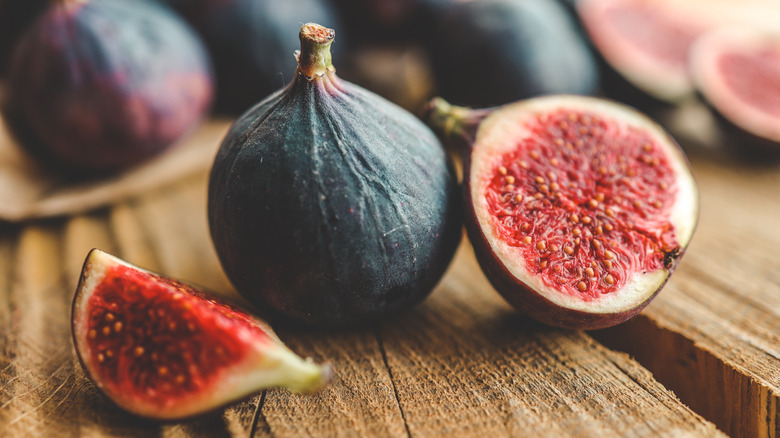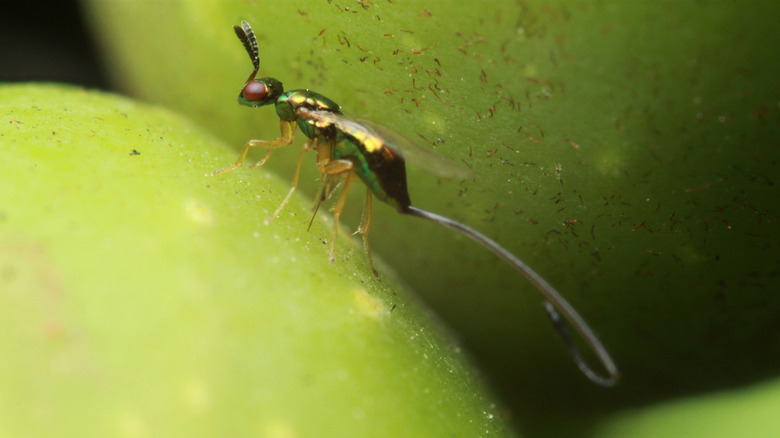Yes, Vegans Can Eat (Some) Figs
For the most part, the path of a vegan has one simple rule: Don't consume animal products or engage in the exploitation of animals. Easy enough, it would seem, until the topic of figs comes into the conversation. There are specific types of fig trees that rely on wasps for pollination, but they don't just rely on a wasp to swing by and then buzz along its way. The wasps die after pollinating the fruit — inside the fruit itself. This poses a moral dilemma for those who don't consume animals.
Many consider figs to be vegan even with the knowledge a wasp may have been killed during the pollination process (which involves female wasps laying eggs in the fig and then exiting with pollen on their bodies). The wasps aren't forced into a terrible fate due to market demand for a food product, after all. However, for those who want to abstain from eating a juicy wasp casket, it's beneficial to know that most fresh fig fruit available at grocery stores is derived from self-pollination.
Fig trees that are wasp-free include anything in the fig species Ficus carica (aka the common fig). The nice thing about the Ficus carica is they don't need pollination to produce fruit, so no wasps are necessary. In the state of California, these trees are so common that 99% of figs are entirely self-pollinating. This is great news for those not wanting to eat figs that have wasp remains in them (vegan or not), but the relationship between fig trees and wasps is a work of art in nature.
The fig tree and the wasp
Figs are a delicious type of fruit, yes, but they're technically considered flowers. As such, figs are pollinated in different ways. There's the traditional, waspy way which frightens those who worry about biting into a bit of bug. However, modern fig trees have been bred to no longer need wasps for pollination, while others are pollinated via the use of plant hormones.
As for those fig species which still require the help of the fig wasp, the process is anything but boring. The small female fig wasp makes her way into the flower and pollinates it before laying her eggs. Shortly after the eggs hatch, the new wasps mate and the males then burrow a hole in the fruit to allow the females to escape with the eggs — pollen in tow.
The mother wasp dies inside the fig after laying her eggs. The enzymes in the fig then digest her remains. So yes, a wasp does die in the process of pollinating these types of fig, but not because of human intervention (that may or may not matter, depending on your ethos). Either way, you won't be biting into a dead wasp.
The symbiotic relationship between these wasps and the fig tree is a normal, natural cycle of creation. Self-pollinating figs eliminate the need for this process (for better or worse). That said, many consumers will be more comfortable knowing there's never been a wasp corpse (or other wasp shenanigans) inside their fruit. Now the only thing left to wonder is how to use up ripe figs before they go bad.

